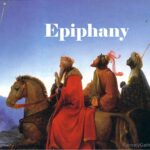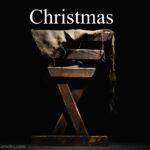
Joseph and Mary presented Jesus at the Temple in Jerusalem to fulfill the Law of Moses which required that the first-born male child be offered to God as a way of giving thanks for sparing the Israelites during the Passover in Egypt.
It was at the Presentation at the Temple that the baby Jesus was recognized as the long-awaited savior and light to the Gentiles by two prophets, Simeon and Anna.
The presentation took place forty days after the birth of the child. The mother of the child would be purified at that time by offering a lamb for sacrifice. The Blessed Virgin Mary did not require purification but observed the law as Jesus would later.
Instead of a lamb, Mary offered a pair of turtledoves or two young pigeons, which reveals her family’s poverty. This symbolic sacrificial offering would ultimately be fulfilled when Jesus, the Lamb of God, is Crucified.
Forty days after Christmas, on February 2, the Catholic Church celebrates the Feast of the Presentation of Lord. It is also known as Candlemas, or formerly as the Feast of the Purification of the Virgin Mary.
Candles represent Christ who is the Light of the World. Candles that are used during Mass, while administering the sacraments, and in other liturgical celebrations are blessed on Candlemas.
St. John Paul II instituted a special day of prayer, World Day for Consecrated Life, and attached it to the Feast of the Presentation of the Lord to honor those consecrated men and women who reflect the light of Jesus upon the world through his Church.
Catholics meditate on the events of the Presentation of Jesus in the Temple as the 4th Joyful Mystery of the Rosary.
A reminder of God’s saving grace:
Mary and Joseph were obedient to the Jewish Law:
Ready to greet the Jesus when He comes:
When the days were completed for their purification according to the law of Moses, they took Him up to Jerusalem to present Him to the Lord, just as it is written in the law of the Lord, “Every male that opens the womb shall be consecrated to the Lord,” and to offer the sacrifice of “a pair of turtledoves or two young pigeons,” in accordance with the dictate in the law of the Lord. Now there was a man in Jerusalem whose name was Simeon. This man was righteous and devout, awaiting the consolation of Israel, and the holy Spirit was upon him. It had been revealed to him by the holy Spirit that he should not see death before he had seen the Messiah of the Lord. He came in the Spirit into the temple; and when the parents brought in the child Jesus to perform the custom of the law in regard to Him, he took Him into his arms and blessed God, saying: “Now, Master, you may let your servant go in peace, according to your word, for my eyes have seen your salvation, which you prepared in sight of all the peoples, a light for revelation to the Gentiles, and glory for your people Israel.”
Luke 2: 22-32
A sacrifice that would be fulfilled on the Cross:
Anticipating salvation and sorrow:
Presenting the Lord in a place of sacrifice:
Commemorating the Presentation at the Temple of Jerusalem:
The presentation of Jesus in the temple shows him to be the firstborn Son who belongs to the Lord. With Simeon and Anna, all Israel awaits its encounter with the Savior-the name given to this event in the Byzantine tradition. Jesus is recognized as the long-expected Messiah, the “light to the nations” and the “glory of Israel”, but also “a sign that is spoken against”. The sword of sorrow predicted for Mary announces Christ’s perfect and unique oblation on the cross that will impart the salvation God had “prepared in the presence of all peoples”.
Catechism of the Catholic Church 529
A great theme of light:
Candles are an important part of the Christian faith:
The same idea survives in the present commemorative rite of that evangelical event: then Jesus was recognized as Messiah; and the Messiah is proclaimed by the old Simeon, invaded by the prophecy of the prophet Isaiah about the awaited Savior, “light of the people”. Christ is the light of the world. It is difficult to attribute a happier, higher, more universal image to the Son of God made man; it demonstrates it, qualifies it, exalts it and presents it to the world. The evangelist John, as we well know, inserts it in the prologue of his gospel: “the light shines in the darkness”. Jesus will make it his own, as one of his own dazzling definitions: “I am the light of the world”. And here the candle, symbol of Christ-light, takes on the value of an offering in your hands, expressive of that which was made by the Child Jesus to God the Lord and also of that which every offerer wants to make of himself and his to the same God, Lord and Father of our life.
Pope Paul VI, Homily, 2 February 1971
A day of special prayer for men and women in consecrated life:
The Truth, Goodness, and Beauty of the Catholic Church
Building the Kingdom of love, justice, and peace:
Share this page with friends and family to start a conversation about your faith.
Don’t miss a post. Learn more about the Catholic Church and strengthen your Catholic faith.
Find more Fiercely Catholic video issues here.
Subscribe here.


